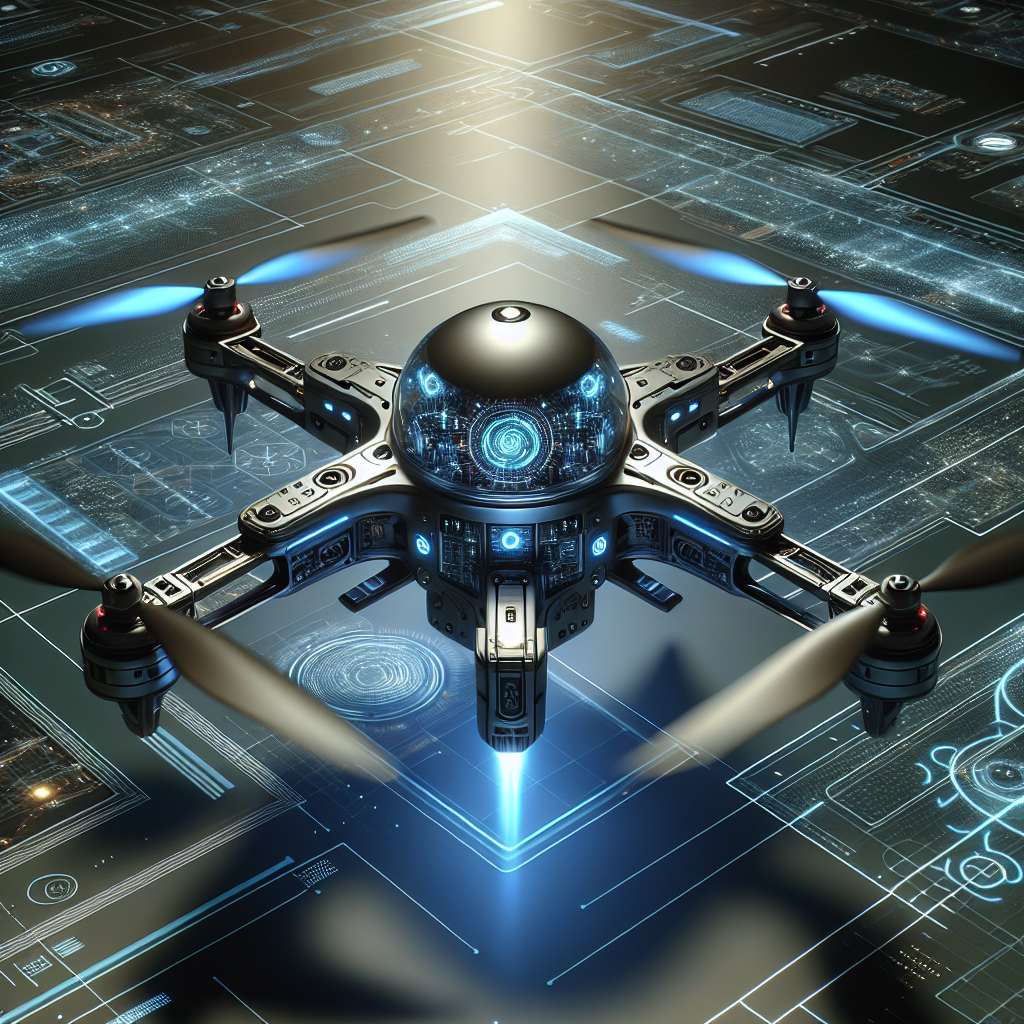The Role of AI and Machine Learning in Autonomous Drones
In recent years, the use of autonomous drones has increased significantly in various industries, including agriculture, construction, surveillance, and delivery services. Autonomous drones are unmanned aerial vehicles (UAVs) that are capable of flying and operating without human intervention. One of the key technologies that enable the autonomy of drones is artificial intelligence (AI) and machine learning.
AI and machine learning play a crucial role in the development of autonomous drones by enabling them to perform complex tasks such as navigation, obstacle avoidance, object detection, and decision-making. In this article, we will explore the role of AI and machine learning in autonomous drones and how they are revolutionizing the way drones are used in different industries.
Navigation and Path Planning
One of the key challenges in developing autonomous drones is enabling them to navigate safely and efficiently in complex environments. AI algorithms, such as reinforcement learning and deep learning, are used to train drones to learn optimal flight paths and avoid obstacles in real-time. These algorithms analyze sensor data, such as GPS and LiDAR, to make decisions on the drone’s flight path and adjust it accordingly based on the environment.
Machine learning algorithms also enable drones to learn from past experiences and improve their navigation skills over time. By continuously analyzing data from previous flights, drones can adapt to changing conditions and optimize their flight paths to achieve better performance.
Object Detection and Recognition
Another important task for autonomous drones is the ability to detect and recognize objects in their environment. AI algorithms, such as convolutional neural networks (CNNs), are used to train drones to identify objects such as people, vehicles, buildings, and crops. These algorithms analyze visual data from cameras mounted on drones to detect and classify objects in real-time.
Object detection and recognition are essential for various applications, such as search and rescue missions, surveillance, and precision agriculture. By using AI and machine learning, drones can identify objects of interest and make decisions based on the information they gather, such as alerting authorities in case of emergencies or monitoring crop health in agriculture.
Obstacle Avoidance
Safety is a top priority when it comes to autonomous drones, especially in crowded or dynamic environments. AI algorithms are used to enable drones to detect and avoid obstacles such as buildings, trees, and other drones during flight. By analyzing sensor data, drones can predict the movement of obstacles and adjust their flight path to avoid collisions.
Machine learning algorithms play a crucial role in training drones to recognize different types of obstacles and learn how to navigate around them effectively. By continuously improving their obstacle avoidance capabilities, drones can operate safely in challenging environments and minimize the risk of accidents.
Decision-Making
AI and machine learning also play a key role in enabling drones to make autonomous decisions based on the information they gather during flight. By analyzing data from sensors and cameras, drones can identify patterns, predict future events, and make informed decisions in real-time.
For example, in agriculture, drones can use AI algorithms to analyze crop health data and make recommendations on irrigation, fertilization, and pest control. In surveillance applications, drones can use machine learning to identify suspicious activities and alert authorities to potential security threats.
FAQs
Q: How do AI and machine learning enable autonomous drones to navigate safely in complex environments?
A: AI algorithms analyze sensor data, such as GPS and LiDAR, to train drones to learn optimal flight paths and avoid obstacles in real-time. Machine learning algorithms enable drones to adapt to changing conditions and optimize their flight paths over time.
Q: What tasks can AI and machine learning help drones perform?
A: AI and machine learning can help drones perform tasks such as navigation, obstacle avoidance, object detection, and decision-making. These technologies enable drones to operate autonomously and make informed decisions based on the information they gather during flight.
Q: How do autonomous drones use AI to detect and recognize objects?
A: AI algorithms, such as convolutional neural networks (CNNs), analyze visual data from cameras mounted on drones to detect and classify objects in real-time. By using machine learning, drones can identify objects of interest and make decisions based on the information they gather.
Q: How do drones use AI to avoid obstacles during flight?
A: AI algorithms enable drones to detect and avoid obstacles by analyzing sensor data and predicting the movement of obstacles in their environment. By continuously improving their obstacle avoidance capabilities through machine learning, drones can navigate safely in challenging environments.
In conclusion, AI and machine learning play a crucial role in the development of autonomous drones by enabling them to perform complex tasks such as navigation, obstacle avoidance, object detection, and decision-making. These technologies are revolutionizing the way drones are used in various industries and paving the way for new applications and capabilities. As AI continues to advance, we can expect to see even more sophisticated and intelligent autonomous drones that can operate efficiently and safely in a wide range of environments.

